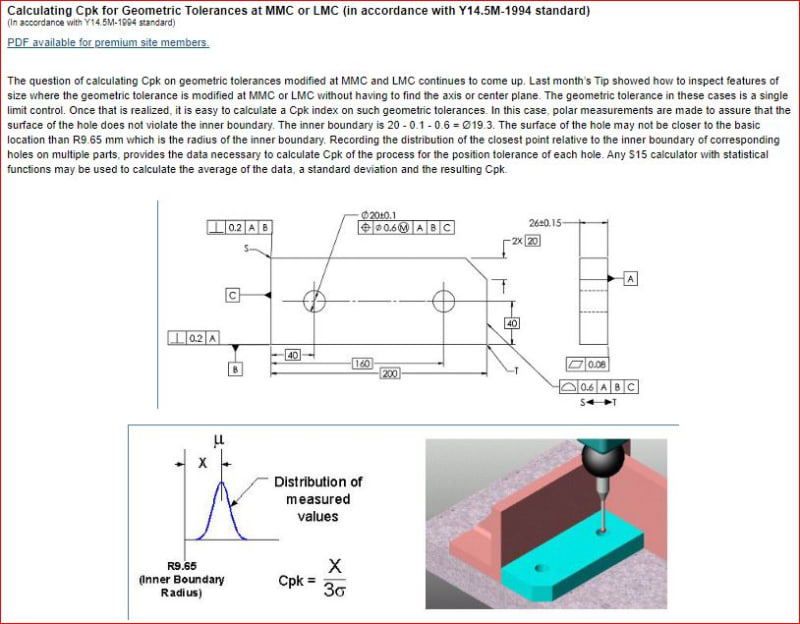I can imagine that some may say that it doesn't give any data as to where exactly (in terms of x, y coordinates) the actual hole is relative to the true position, therefore it is hard to tell exactly how the process should be improved, if improvement is needed.
I would have to imagine that measurement data can produce both metrics - those needed for capability per the virtual condition/boundary method while still producing independent position/size/orientation information to be retained and analyzed separately for process monitoring, right?
I wonder what causes such aversion to consideration of orientation? Perhaps it comes from a perceived difficulty in separating orientation error from position error? It seems to me it could be done in such a way that everyone is satisfied while collecting enough data to take into account orientation error.
Axis Interpretation
d = diameter of orientation constrained axis containing envelope
(x_d,y_d) = x and y coordinates of d relative to true position
D = diameter of location and orientation constrained axis containing envelope
Surface Interpretation
d_o = diameter of orientation constrained RAME
(x_o,y_o) = x and y coordinates of d_o relative to true position
D_TP = diameter of location and orientation constrained RAME (2*r_TP the "true position mating size" per Y14.5.1-1994 or what I was previously calling size_RAME)
values for the VC/boundary method could still be calculated as:
radial_clearance_axis = (size_UAME - D - size_MMC - t_0)/2
radial_clearance_surface = (D_TP - size_MMC - t_0)/2
Utilization of either (x_d,y_d) for axis or (x_o,y_o) for surface would provide the (x,y) coordinate data for continuous process monitoring of position, and evaluation of d (axis) or the difference between d_o and size_UAME (surface) would provide orientation data for continuing process monitoring of orientation. If you wanted to really go wild the UAME axis could be converted into a vector projected onto the (x,y) plane which could be utilized to show the "direction" of the UAME axis orientation error to see if theres a bias or pattern to the deviation which could be addressed in the process. Quantitative analysis of this might be a little more difficult but I would imagine doable - graphical visualization might be easier.
Perhaps the surface data is not as useful as the axis data for process monitoring, however it seems to me that if this information is available (surface data) for virtual condition/boundary method capability analysis that the axis data can be relatively easily derived.
Thanks also for that information on non-normal distributions, I'll definitely have to dig into that more. Looks like at least Paul Jackson mentions a box-cox transformation in his presentation for dealing with non-normal distributions.

